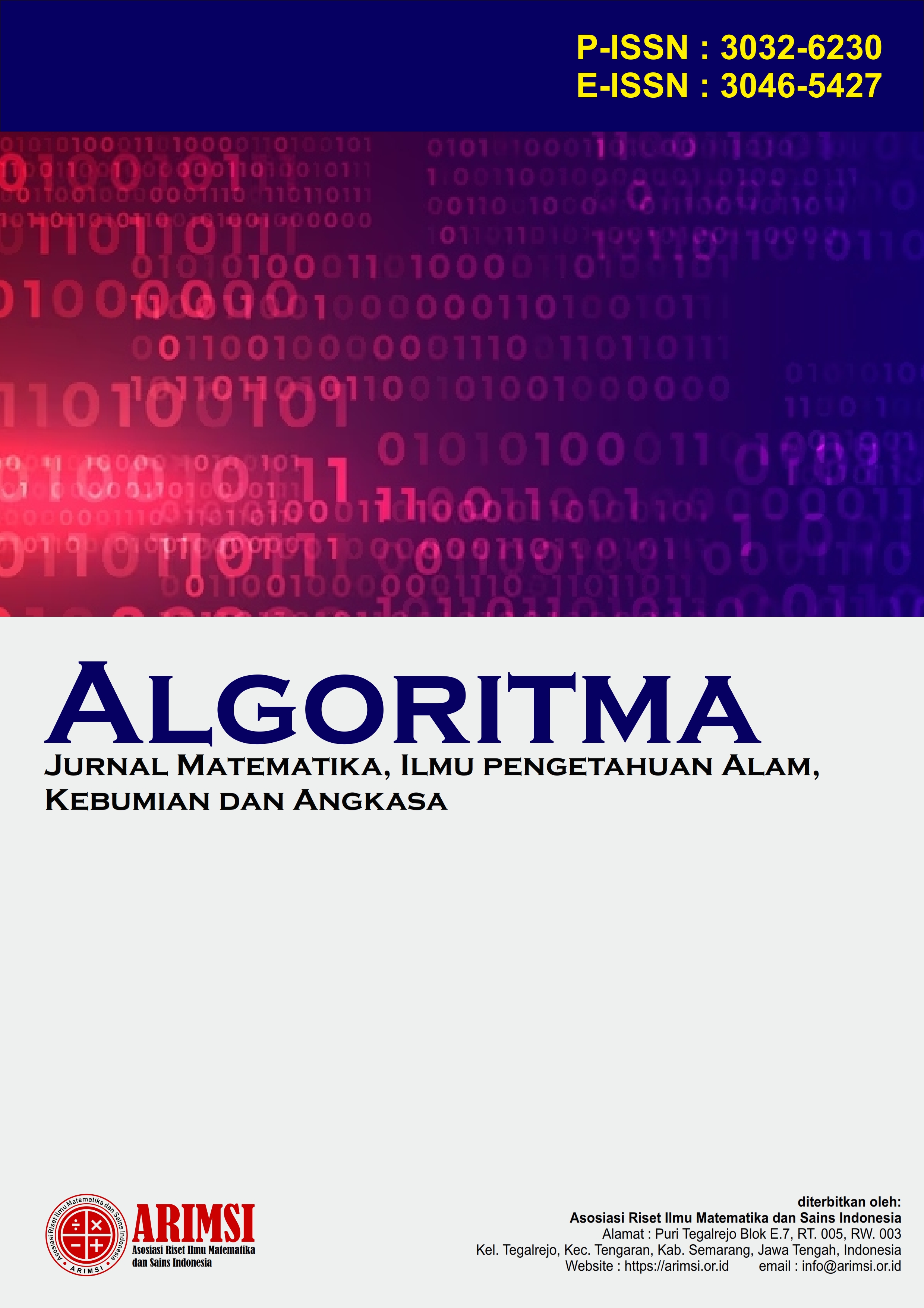Pengembangan Bahan Ajar Perubahan Iklim Berbasis Literasi Sains Bermuatan Karakter Rasa Ingin Tahu Peserta Didik SMP
DOI:
https://doi.org/10.62383/algoritma.v2i3.52Keywords:
Science Literacy, Character, Climate ChangAbstract
This study aims to describe the validity of climate change teaching materials based on science literacy and curiosity character of junior high school students. The research method used is research and development (R&D) through the modified four-D (4 D) model. This modul development procedure includes three stages, whisch are define, design and develop. The subjects of this research and development include 5 expert validators. The type of data obtained is quantitative data in the formdof product validation questionnaire scores. The results of research and development of junior high school science teaching materials based on science literacy and characterised by curiosity on the topic of climate change by expert validators obtained validity results with a total of 0.90 with valid criteria. This is reviewed from three aspects: (1) content feasibility scored 0.90 with valid criteria, (2) presentation feasibility aspect scored 0.88 with valid criteria, (3) linguistic feasibility aspect scored 0.92 with valid criteria. So it can be concluded from all the validity tests that the teaching materials developed are classified as valid criteria.
Downloads
References
Azwar, S. (2015). Metode Penelitian. Yogyakarta: Pustaka Belajar.
Chiappetta, E.L., D.A. Fillman & G.H. Sethna. (1991). A Method to Quantify Major Themes of Scientific Literacy in Science Textbooks. Journal of Research in Science Teaching. 28(8): 713-725.
Depdiknas. (2008a). Kamus bahasa Indonesia. Jakarta: Balai pustaka.
Faturrohman, H. P, Suryana, A. A, & Fatriany, F. (2013). Pengembangan pendidikan karakter. Bandung: Refika aditama.
Fitria, Yanti. (2017). Scientific literacy as foundation in character building for early childhood and elementary grade s chool. Prosiding, International Conference of Early Childhood Education (ICECE 2017): Advances in Social Science, Education and Humanities Research (ASSEHR), volume 169. Universitas Negeri Padang.
Kemendiknas. (2010). Pengembangan pendidikan budaya dan karakter bangsa. Jakarta: Kemendiknas.
Maslaha, W. & Rofiah. (2019). Pengembangan Bahan Ajar (Modul) Sejarah Indonesia Berbasis Candi-Candi di Blitar untuk Meningkatkan Kesadaran Sejarah. Jurnal Agastya. 9(1): 31-43
Muljono, P. (2010). Kegiatan penilaian buku teks pelajaran pendidikan dasar dan menengah. Bogor: IPB (Bogor Algiculture Universitys)
Nurkaenah, N., Isnaeni, W., & Subali, B. (2019). Influence of SETS Science Learning Program Towards Scientific Literacy Improvement. Journal of Primary Education, 8(1), 59–66.
OECD. (2006). Learning for Tomorrow’s World. USA: OECD-PISA.
Parmin. (2012). Pengembangan Modul Pembelajaran IPA Terpadu Berwawasan Sains, Lingkungan, Teknologi, dan Masyarakat. Jurnal Penelitian Pendidikan. 29(2): 125-126.
Rubini, B., Permanasari, A., & Permana, I. (2017). Building character through science learning with scientific literacy based. Prosiding, The 2nd Annual Applied Science and Engineering Conference (AASEC 2017). IOP Conf. Series: Materials Science and Engineering 288
Sugiyono. (2015). Metode Penelitian Kuantitatif, Kualitatif, dan R&D. Bandung: CV Alfabeta
Wantoro. (2013). Analisis framing atas pembentukan representasi visual pada 4 (empat) sampul depan novel laskar pelangi edisi indonesia. Bandung: Magister Desain Institut Teknologi Bandung.
Downloads
Published
How to Cite
Issue
Section
License
Copyright (c) 2024 Algoritma : Jurnal Matematika, Ilmu pengetahuan Alam, Kebumian dan Angkasa

This work is licensed under a Creative Commons Attribution-ShareAlike 4.0 International License.





